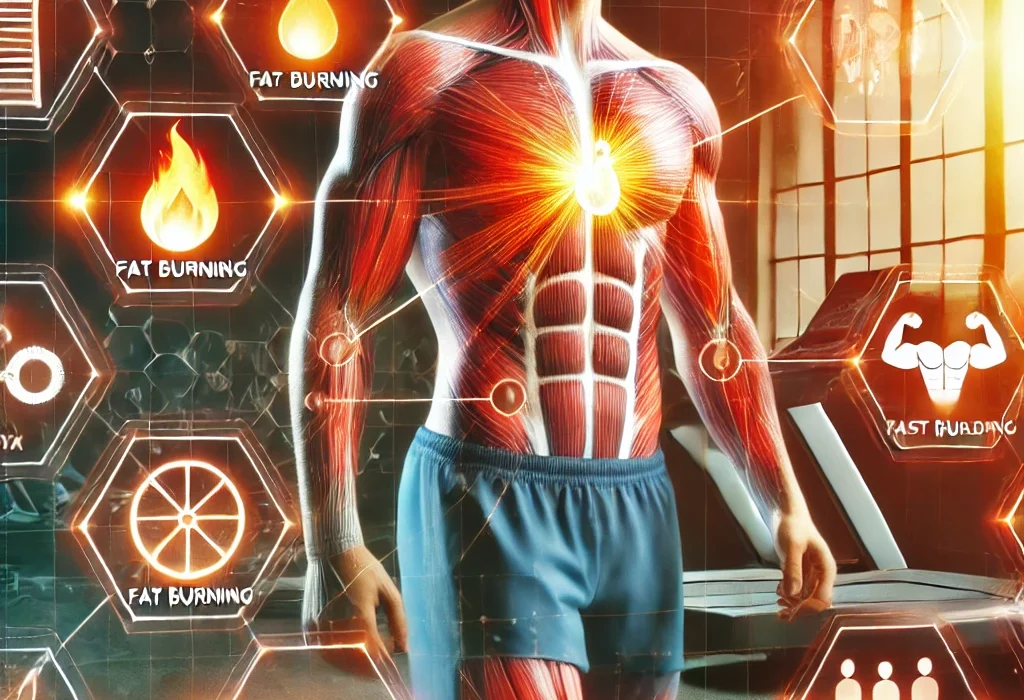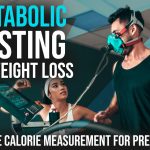The Science of Metabolism: How Your Body Burns Fat and Builds Muscle
Metabolism is a term that encompasses all the chemical reactions that occur within your body to maintain life. These reactions are crucial for converting food into energy, building and repairing tissues, and eliminating waste products. Understanding the science of metabolism is essential for anyone looking to optimize their health, manage their weight, and improve physical performance. In this article, we’ll delve into the intricate processes of how your body burns fat and builds muscle.
Understanding Metabolism
Metabolism can be divided into two categories: catabolism and anabolism.
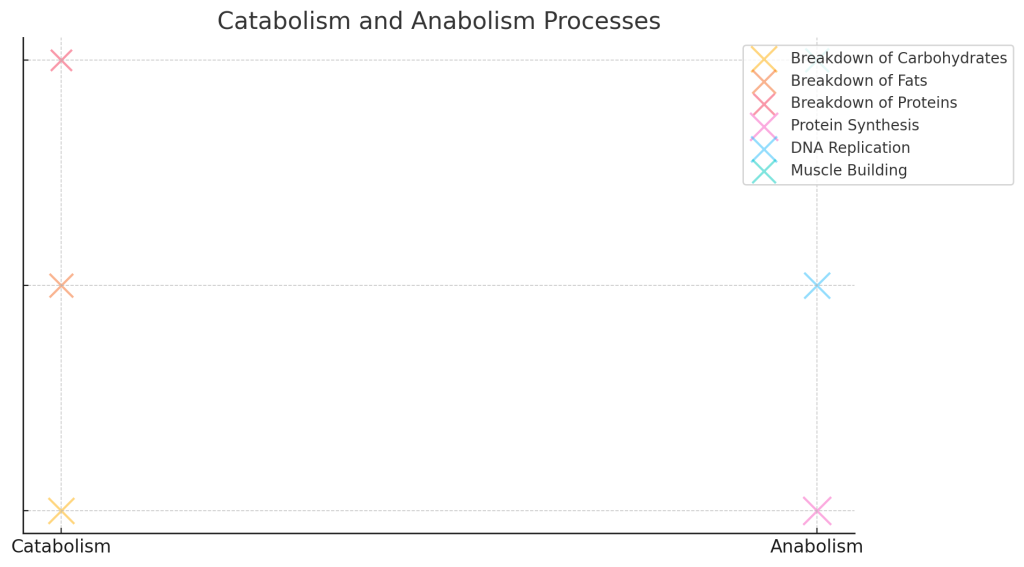
- Catabolism is the process of breaking down molecules to produce energy. This includes the breakdown of carbohydrates, fats, and proteins from the foods we eat into simpler forms that the body can use for fuel.
- Anabolism is the process of building up molecules, which requires energy. This includes the synthesis of complex molecules like proteins, nucleic acids, and lipids that are essential for cell growth, repair, and muscle building.
Both catabolic and anabolic processes are crucial for maintaining the body’s energy balance and overall health.
How Your Body Burns Fat
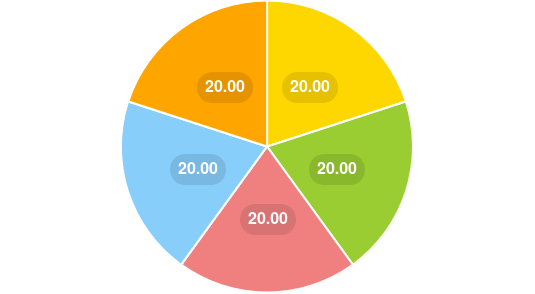
Burning fat, or lipolysis, is a catabolic process where stored fats (triglycerides) are broken down into fatty acids and glycerol. These components are then used for energy. Here’s a closer look at the steps involved:
- Mobilization: Hormones like adrenaline and glucagon signal fat cells to release triglycerides.
- Lipolysis: Triglycerides are broken down into free fatty acids and glycerol.
- Transport: Free fatty acids are transported to the mitochondria in cells.
- Beta-Oxidation: In the mitochondria, fatty acids are converted into acetyl-CoA, which enters the Krebs cycle.
- Energy Production: Acetyl-CoA is used in the Krebs cycle and electron transport chain to produce ATP (adenosine triphosphate), the main energy currency of cells.
This process is influenced by factors such as diet, exercise, and hormonal balance. Regular physical activity and a diet rich in whole foods can enhance the body’s ability to burn fat efficiently.
How Your Body Builds Muscle
| Step | Description |
| Stimulus | Resistance training causes microscopic damage to muscle fibers. |
| Inflammatory Response | The body responds to this damage by triggering an inflammatory response, which activates satellite cells. |
| Activation of Satellite Cells | These cells proliferate and differentiate into mature muscle cells, fusing with existing muscle fibers to repair and grow them. |
| Protein Synthesis | To support this growth, the body needs a positive protein balance, consuming sufficient dietary protein to provide necessary amino acids. |
| Hormonal Regulation | Hormones such as insulin, growth hormone, and testosterone play critical roles in muscle protein synthesis and hypertrophy. |
Muscle building, or hypertrophy, is an anabolic process that involves the synthesis of new muscle proteins. This process is stimulated by resistance training and adequate nutrition. Here’s how it works:
- Stimulus: Resistance training causes microscopic damage to muscle fibers.
- Inflammatory Response: The body responds to this damage by triggering an inflammatory response, which activates satellite cells.
- Activation of Satellite Cells: These cells proliferate and differentiate into mature muscle cells, fusing with existing muscle fibers to repair and grow them.
- Protein Synthesis: To support this growth, the body needs a positive protein balance. This means consuming sufficient dietary protein to provide the necessary amino acids for muscle repair and growth.
- Hormonal Regulation: Hormones such as insulin, growth hormone, and testosterone play critical roles in muscle protein synthesis and hypertrophy.
Adequate rest, nutrition, and a consistent exercise regimen are key factors in promoting muscle growth. Ensuring a diet rich in protein, complex carbohydrates, and healthy fats, along with proper hydration and sleep, supports the anabolic processes necessary for muscle building.
Balancing Fat Burning and Muscle Building
Balancing fat burning and muscle building requires a strategic approach to diet, exercise, and lifestyle. Here are some tips to optimize both processes:
- Combine Strength Training and Cardio: Incorporate both resistance training and cardiovascular exercises into your routine. Strength training builds muscle, while cardio enhances fat burning.
- Prioritize Protein Intake: Consume enough protein to support muscle repair and growth. Aim for a balanced intake throughout the day, especially after workouts.
- Monitor Caloric Intake: To lose fat, maintain a slight caloric deficit. To build muscle, ensure a slight caloric surplus. Adjust based on your specific goals and body response.
- Stay Hydrated: Proper hydration is essential for metabolic processes and overall health.
- Get Enough Sleep: Quality sleep is crucial for recovery, hormone regulation, and overall metabolic health.
- Manage Stress: Chronic stress can negatively impact metabolism and hinder your fitness goals. Practice stress management techniques like mindfulness, yoga, or meditation.
Achieving a balance between fat burning and muscle building requires a strategic approach to exercise, nutrition, and lifestyle. While these goals might seem opposing, with careful planning and consistency, you can optimize your body composition and enhance your overall health. Here are some detailed strategies to help you effectively balance fat burning and muscle building.
Combine Strength Training and Cardio
Strength Training:
- Engage in resistance training at least 3-4 times a week. This includes exercises such as weightlifting, bodyweight exercises, and resistance band workouts.
- Focus on compound movements like squats, deadlifts, bench presses, and pull-ups. These exercises engage multiple muscle groups, promoting more significant muscle growth and fat burning.
- Ensure progressive overload by gradually increasing the weights or resistance used in your workouts. This continual challenge helps in building muscle and improving strength.
Cardiovascular Exercise:
- Incorporate cardio sessions 2-3 times a week. This can include activities like running, cycling, swimming, or high-intensity interval training (HIIT).
- HIIT is particularly effective for fat loss as it combines short bursts of intense activity with periods of rest or low-intensity exercise. It boosts metabolism and burns calories even after the workout.
Prioritize Protein Intake
Protein is crucial for muscle repair and growth. To balance fat burning and muscle building, aim to consume high-quality protein sources with each meal.
- Daily Protein Intake: Aim for 1.2 to 2.2 grams of protein per kilogram of body weight, depending on your activity level and goals.
- Protein Sources: Include lean meats, fish, eggs, dairy products, legumes, nuts, and seeds in your diet.
- Timing: Distribute protein intake evenly throughout the day and consider having a protein-rich meal or snack after workouts to support muscle recovery.
Monitor Caloric Intake
Balancing fat burning and muscle building involves careful management of caloric intake.
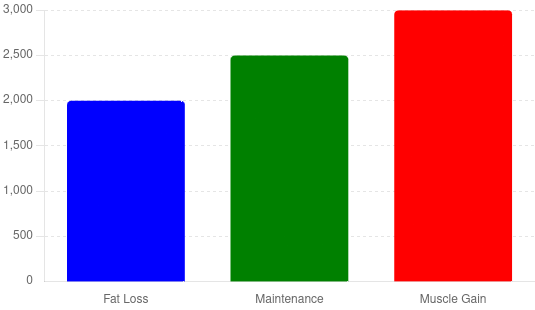
- Caloric Deficit for Fat Loss: To lose fat, you need to consume fewer calories than your body expends. Aim for a moderate caloric deficit (around 500 calories per day) to ensure steady fat loss without sacrificing muscle mass.
- Caloric Surplus for Muscle Gain: To build muscle, you need a slight caloric surplus. This means consuming more calories than your body needs for maintenance, providing extra fuel for muscle growth.
- Adjust as Needed: Regularly monitor your progress and adjust caloric intake based on changes in body composition and goals.
Stay Hydrated
Hydration plays a critical role in both fat metabolism and muscle function.
- Drink plenty of water throughout the day. Aim for at least 8-10 glasses (2-2.5 liters) of water daily.
- Hydrate before, during, and after workouts to maintain performance and support recovery.
Get Enough Sleep
Quality sleep is essential for recovery, hormonal balance, and overall metabolic health.
- Aim for 7-9 hours of sleep per night.
- Establish a consistent sleep routine by going to bed and waking up at the same time each day.
- Create a sleep-friendly environment by keeping your bedroom dark, cool, and quiet.
Manage Stress
Chronic stress can negatively impact metabolism and hinder your fitness goals. High stress levels can lead to increased cortisol, which promotes fat storage, particularly around the abdomen.
- Practice stress management techniques such as mindfulness meditation, yoga, deep breathing exercises, and regular physical activity.
- Ensure you have time for hobbies and activities that you enjoy and that help you relax.
Consistency and Patience
Balancing fat burning and muscle building is a gradual process that requires consistency and patience. It’s important to maintain a long-term perspective and avoid drastic measures that can be unsustainable or harmful.
- Set realistic goals and track your progress regularly.
- Celebrate small milestones along the way to stay motivated.
- Make adjustments as needed based on your progress and feedback from your body.
By following these strategies, you can effectively balance fat burning and muscle building, leading to improved body composition, enhanced physical performance, and better overall health. Remember, the key to success is consistency, dedication, and a willingness to adapt your approach based on your individual needs and goals.
Understanding the science of metabolism and how your body burns fat and builds muscle can empower you to make informed decisions about your health and fitness. By combining the right balance of exercise, nutrition, and lifestyle habits, you can optimize your metabolism, achieve your fitness goals, and enhance your overall well-being. Remember, consistency and patience are key to seeing long-term results.
Best Protein Sources for Muscle Building
Protein is essential for muscle repair and growth. Here are some of the best protein sources to include in your diet to support muscle building:
Animal-Based Protein Sources
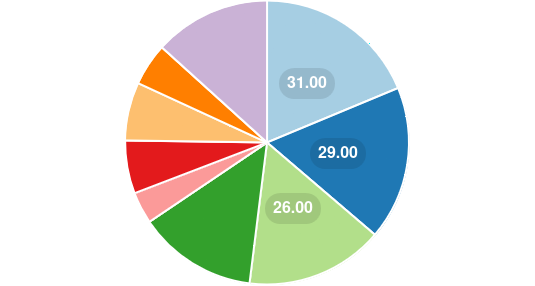
- Chicken Breast
- High in protein and low in fat.
- 31 grams of protein per 100 grams.
- Turkey
- Similar to chicken but with a slightly different nutrient profile.
- 29 grams of protein per 100 grams.
- Lean Beef
- Provides high-quality protein and essential nutrients like iron and B vitamins.
- 26 grams of protein per 100 grams.
- Fish (e.g., Salmon, Tuna)
- Rich in protein and omega-3 fatty acids, which support muscle recovery.
- 20-25 grams of protein per 100 grams.
- Eggs
- Considered a perfect protein source as they contain all essential amino acids.
- 6 grams of protein per large egg.
- Dairy Products (e.g., Greek Yogurt, Cottage Cheese)
- High in protein and beneficial for muscle repair.
- Greek yogurt: 10 grams of protein per 100 grams.
- Cottage cheese: 11 grams of protein per 100 grams.
- Milk
- Contains both whey and casein proteins, providing both fast and slow-digesting proteins.
- 8 grams of protein per cup (240 ml).
- Pork Tenderloin
- Lean cut of meat with a high protein content.
- 22 grams of protein per 100 grams.
Plant-Based Protein Sources
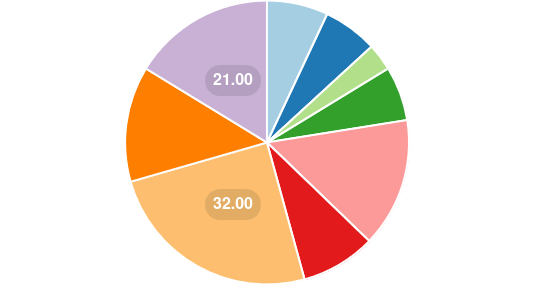
- Lentils
- High in protein and fiber, making them a great plant-based protein source.
- 9 grams of protein per 100 grams (cooked).
- Chickpeas
- Versatile and rich in protein and other nutrients.
- 8 grams of protein per 100 grams (cooked).
- Quinoa
- A complete protein containing all nine essential amino acids.
- 4 grams of protein per 100 grams (cooked).
- Tofu
- Made from soybeans, it’s a complete protein and very versatile.
- 8 grams of protein per 100 grams.
- Tempeh
- Fermented soy product with a higher protein content than tofu.
- 19 grams of protein per 100 grams.
- Edamame
- Young soybeans that are high in protein and fiber.
- 11 grams of protein per 100 grams.
- Hemp Seeds
- Complete protein source with a good balance of omega-3 and omega-6 fatty acids.
- 32 grams of protein per 100 grams.
- Chia Seeds
- High in protein, fiber, and omega-3 fatty acids.
- 17 grams of protein per 100 grams.
- Nuts and Nut Butters (e.g., Almonds, Peanut Butter)
- Good source of protein, healthy fats, and other nutrients.
- Almonds: 21 grams of protein per 100 grams.
- Peanut butter: 25 grams of protein per 100 grams.
Tips for Incorporating Protein into Your Diet
- Spread Protein Intake Throughout the Day: Aim to include a source of protein in each meal and snack to support muscle protein synthesis.
- Combine Protein Sources: Mix animal and plant-based proteins to ensure a varied and balanced intake of amino acids.
- Post-Workout Protein: Consume protein within 30-60 minutes after a workout to enhance muscle recovery and growth. A protein shake or a meal containing high-quality protein can be effective.
- Stay Hydrated: Adequate hydration is crucial for muscle function and protein metabolism.
By incorporating a variety of these protein sources into your diet, you can support muscle building and overall health effectively.


